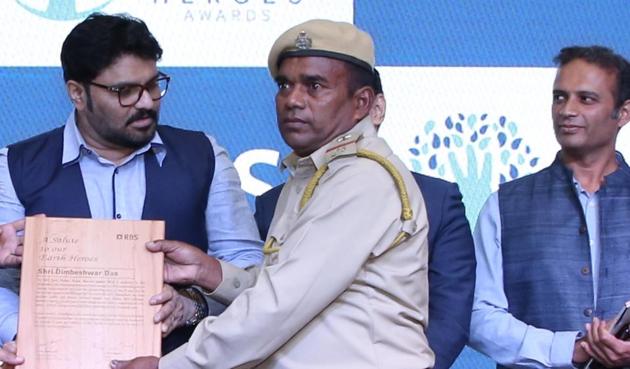India’s forest guards, the unsung climate warriors | Analysis
To appreciate the work of the guards, one needs to understand the why forests are important. A report by the ministry of environment says India’s forests absorb 11.25% of greenhouse gases, which are responsible for the climate crisis.
For the last 30 years, there has not been much change in Dimbeshwar Das’ daily routine. “It’s been only about patrolling the Kaziranga National Park (Assam), almost 10-15 kms per day, protecting the one-horned rhinos and other animals from poachers,” Das, a forest guard, told me recently.

The 53-year-old was in Delhi to receive the Earth Hero Award from the Royal Bank of Scotland. The award citation details Das’ contribution to conservation. “He has faced poachers’ bullets and threats, survived charges from rhinos, wild buffaloes, elephants, and big cats, and had to move houses several times to evade threats to his family — all in the service to the protection of the national park, a national asset.” Das has also developed a strong network of local villagers who have become the eyes and ears of the forest department in the state.
Despite the stellar role that forest guards such as Das play to protect our under-stress natural heritage, it is unfortunate that they don’t always get the public recognition they deserve. This is probably because forest guards, the department’s frontline staff, work in remote areas of the country, and citizens don’t understand/value how the work of forest guards also impacts their lives.
To appreciate the work of the guards, one needs to understand the why natural resources are important. A report by the ministry of environment says India’s forests absorb 11.25% of greenhouse gases, which are responsible for the climate crisis. And emissions are increasing every year. According to a recent World Meteorological Organization report, atmospheric concentrations of carbon dioxide and other greenhouse gases reached a new high in 2018. In such a scenario, the role of forests, and forest guards, is critical, as the climate catastrophe singes everyone. And, these hardened footsoldiers just don’t protect forests and wildlife on the land, but also India’s marine resources such as corals. These corals are the breeding grounds of fish, a livelihood source for thousands of people. If you are keen to watch the astonishing range of roles that forest guards play to keep our wild areas intact and the challenging conditions they work in, then do watch Krishnendu Bose’s six-part series, Heroes of The Wild Frontiers.
Along with the lack of public recognition, forest guards also have to deal with inadequate efforts by the State to take care of their professional and personal well-being. While over the years, the police and the army have been modernised and the living conditions of the personnel and their families have improved, the winds of change have not reached the forest department. Most of the living facilities inside the jungles, where the guards stay, are in abject condition, and many even don’t have proper drinking water or communication services. For example, the Sundarbans episode of the documentary mentioned above, shows the floating camps of the guards. They are small, dark, dank boats that are shared by four to five guards. “There are tigers on the land and crocodiles in the water... so if the boat malfunctions, we are trapped for days till help arrives,” said a forest guard.
Unlike armymen and police personnel, forest guards don’t get any special allowances for hardship postings, even though they stay in the wilderness almost throughout their careers. Or, for that matter, State awards. Over the years, recruitment has also been slow, putting more pressure on the aging cadre. Then there is the problem of outdated equipment such as rifles, lack of emergency medical assistance, and weak safety systems. Sujoy Banerjee, an Indian Forest Service (IFS) officer, said that the public must also be made aware that many guards have been killed by the timber mafia, poachers and wild animals. In 2017, 29 were killed on duty, making India the most dangerous country for forest guards. The forest and wildlife force must be upgraded and modernised.
The cases of encroachment and man-animal conflict are also increasing, and India’s forests need well-trained and equipped field staff. “Technology can support, but nothing can replace human resource,” said IFS officer Parveen Kaswan. After all, institutions are as strong as the quality of their frontline staff.






